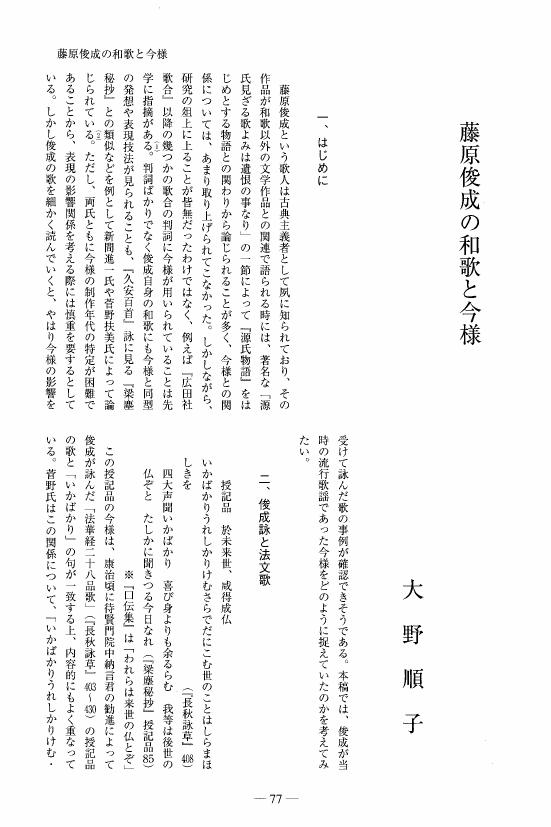3 0 0 0 OA 鳥取県北条砂丘開拓農地における土地利用の変遷─『嫁殺しの浜井戸』の発展的解消に向けて─
- 著者
- 浜根 知恵/大野 順子 大野 順子
- 出版者
- 桃山学院大学
- 雑誌
- 桃山学院大学人間科学 (ISSN:09170227)
- 巻号頁・発行日
- no.43, pp.121-143, 2012-11-21
The pioneering activities on the Hojyo Dunes, Tottori Prefecture, came about due to the abundant cultivation of cotton and colza that took place during the Edo period. This changed to the cultivation of mulberry with the advent of the Meiji period because of the importation of cotton from foreign countries. This Dune area was irrigated using a small artificial pond known as the beach well and it was used to draw up subterranean water it came to be called the "Wife-killer beach well" because of the intense labor it required. In the 1950's the government provided this area with irrigation facilities. With these government sponsored policies and advances in farming technologies it became possible to cultivate items such as grapes, tomatoes, melons, eddo potatoes and leeks that could be used to make monetary profit in the market in addition to more traditional crops of sweet potatoes, shallots and watermelons. Farming in this desert area, which demanded that fields be treated with artificial measures due the lack of water created a state of affairs where there had to be a switchover to growing crops that were profitable and in demand in the marketplace along with the implementation of modern irrigation techniques. This resulted in advancing cooperation simultaneous with the development of large scale management that exceeded the range of the then existent traditional community. And thus, with the introduction of modern irrigation facilities along with the elimination of excessive labor connected with the Wife-killer beach well, we also see the development of communal farming and the sharing of production and distribution activities in the area and other areas as well as the advancement of usage regulations involving water used for agricultural purposes. With this, there also rapidly came into existence, a large-scale form of agricultural management concerned with the renting and leasing of land.
1 0 0 0 OA 藤原俊成の和歌と今様
- 著者
- 大野 順子
- 出版者
- 中世文学会
- 雑誌
- 中世文学 (ISSN:05782376)
- 巻号頁・発行日
- vol.55, pp.77-87, 2010 (Released:2018-02-09)
1 0 0 0 OA 戦後教育課程の変遷:「経験主義」を中心に
- 著者
- 大野 順子
- 雑誌
- 摂南大学教育学研究 = Bulletin of Educational Research of Setsunan University (ISSN:13498118)
- 巻号頁・発行日
- no.18, pp.11-24, 2022-03
本稿は、第二次世界大戦後、軍国主義から民主主義へ社会状況が変化する中で、アメリカより「経験主義」が教育課程に導入された状況を概観し、さらに、それが1958年の教育課程改訂において排除された教育課程改訂のプロセスについて、改めて整理しなおし、検討したものである。特に、「経験主義」が当時の教育課程から排除された理由には、その無計画性や系統的でないこと。内容が個人的であり、人間性重視で普遍的知識の学習を軽視していることなどが指摘され、「はいまわる経験主義」として批判された。しかしながら、実は、経験主義的な学びは知識軽視の学びではなく、むしろ知識を経験学習に加えていくことでより子どもたちの学びが深まること。そして、個人的な学びと言われがちではあるが、個人の経験を通して導き出される普遍的知識が存在すること。さらには、そもそも「経験」をともなわない学びは真の学びとならないという指摘があることから、「経験と知識をつないだ学び」が本来教育課程には重要であり、「経験主義」こそ学力と人間性の両者をつなぐものとなることを指摘した。また、こうした学習理論は、近年の教育課程改訂においても「アクティブラーニング」の導入や「社会に開かれた教育課程」などのように注目されている点についても述べた。
1 0 0 0 OA 藤原顕季の和歌と今様
- 著者
- 大野 順子 Junko ONO オオノ ジュンコ
- 出版者
- 総合研究大学院大学文化科学研究科
- 雑誌
- 総研大文化科学研究 = Sokendai review of cultural and social studies (ISSN:1883096X)
- 巻号頁・発行日
- no.6, pp.1-16, 2010-03-31
1 0 0 0 OA 多分化社会におけるシティズンシップについての検討 移民・移住女性への聞き取り調査を通して
1 0 0 0 OA 鳥取県北条砂丘開拓農地における土地利用の変遷─『嫁殺しの浜井戸』の発展的解消に向けて─
- 著者
- 浜根 知恵 大野 順子
- 出版者
- 桃山学院大学
- 雑誌
- 桃山学院大学人間科学 = Human sciences review, St. Andrew's University (ISSN:09170227)
- 巻号頁・発行日
- no.43, pp.121-143, 2012-11-21
The pioneering activities on the Hojyo Dunes, Tottori Prefecture, came about due to the abundant cultivation of cotton and colza that took place during the Edo period. This changed to the cultivation of mulberry with the advent of the Meiji period because of the importation of cotton from foreign countries. This Dune area was irrigated using a small artificial pond known as the beach well and it was used to draw up subterranean water it came to be called the "Wife-killer beach well" because of the intense labor it required. In the 1950's the government provided this area with irrigation facilities. With these government sponsored policies and advances in farming technologies it became possible to cultivate items such as grapes, tomatoes, melons, eddo potatoes and leeks that could be used to make monetary profit in the market in addition to more traditional crops of sweet potatoes, shallots and watermelons. Farming in this desert area, which demanded that fields be treated with artificial measures due the lack of water created a state of affairs where there had to be a switchover to growing crops that were profitable and in demand in the marketplace along with the implementation of modern irrigation techniques. This resulted in advancing cooperation simultaneous with the development of large scale management that exceeded the range of the then existent traditional community. And thus, with the introduction of modern irrigation facilities along with the elimination of excessive labor connected with the Wife-killer beach well, we also see the development of communal farming and the sharing of production and distribution activities in the area and other areas as well as the advancement of usage regulations involving water used for agricultural purposes. With this, there also rapidly came into existence, a large-scale form of agricultural management concerned with the renting and leasing of land.

